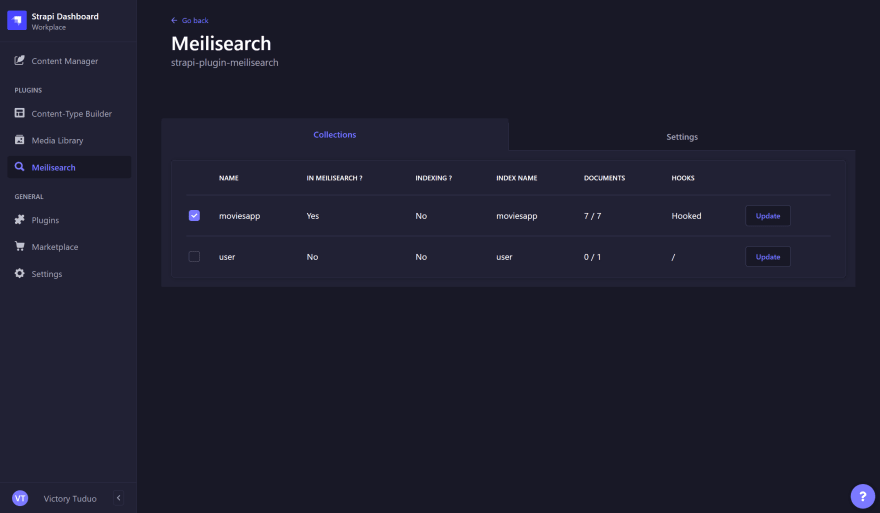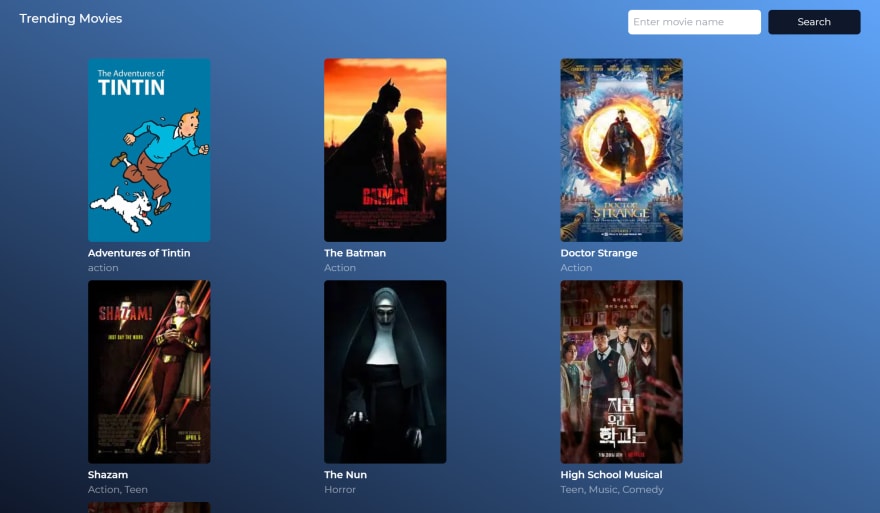Dynamic webpages with a high amount of site content are usually complex for users to navigate looking for specific data. These sites use On-site search (also called internal search), which uses a search bar to return the results of a search query made by the user. This simple implementation provides relevant content to users' needs, saving time and effort spent searching for data.
Goals
In this tutorial, readers will learn what on-site search is, when to use it, how they can build a web application implementing search functionality with a CMS, and its benefits.
What is On-site Search?
As the name implies, on-site search is a search feature that takes place on a website. It uses a search bar, where the user enters a search query. Based on the query in the search bar, the site data is filtered to provide information relevant to the search.
Why and When Do We Use This?
Search engines such as Google have a vast amount of information. To provide relevant results for what the user wants, they use search bars to collect a search query and display popular and related results to the user's entry. This feature is also nice to have quality for web applications, to provide ease of use to the site’s visitors.
Here are 5 Benefits of adding On-Site Search Feature
Sites built with an on-site search feature have a better rate of conversion. The conversion rate is the percentage of users who have received their desired result. It's a ratio of the total number of visitors to a site divided by the number who could achieve what they wanted. With a search feature, users can quickly gain relevant results and satisfaction by visiting a web application.
Sites with an on-site search feature have a better user experience. Users can easily navigate, search for, and retrieve relevant information. No matter how nice the features and information offered by a site are, it would be a waste if users can’t find them on the site. For a better site experience, there’s a need for a feature to be able to create search queries and browse through relevant search results.
On-site search reduces the number of unsatisfied visitors. When visitors visit your web pages, they will mostly want to find relevant information quickly. If your website has a poor search feature, you risk losing your site’s visitors and getting disappointed users who will be less likely to revisit your website.
E-commerce websites showcasing different categories can use an on-site search feature to provide information on similar products and services to the user’s search query. These recommendations can provide users with similar products they may be interested in.
On-site search can improve the SEO of a website. Good search functionality and an excellent user experience make for relevant search results. With your website ranking well on your visitor searches, it improves your site’s SEO and makes it get ranked higher by search engines.
What is Meilisearch?
Meilisearch is an open-source search engine that can be easily integrated into web applications to handle search functionalities. The Meilisearch Strapi Plugin is a search plugin that can be linked to the Strapi CMS to filter through the store information and provide relevant/related results to the search query entered in the search box.
Why Should You Use Meilisearch?
It is easy to set up: Meilisearch effortlessly fits into your application. With a few steps, this search feature can be integrated into your application.
It is flexible: Meilisearch readily updates to reflect changes to the data source, for instance, when new data is added or pre-existing information is modified.
It is fast and typo-tolerant: Meilisearch offers quick search results and has a feature to account for typing errors made by users. Even if users made a mistake in the search query, they would still get relevant results.
Data security: The data linked to Meilisearch is secure and can only be accessed with the correct API credentials.
What is Strapi CMS?
Strapi is an open-source, headless Content Management System developed using the Node.js Javascript framework. Strapi provides users with features to store, manipulate, and manage content across their application workflows. It's simple and easy to use. Strapi provides users with an administrative panel where they can monitor and manipulate their content.
Using Meilisearch in a Movies Web Application as a Use Case
Frontend and Strapi Setup
To quickly follow up with this tutorial, you will need to get the starter code for the movie web application. The front-end can be found on the GitHub repo. You can also get the Strapi starter template with some movie collections from the following repo.
If you run the front-end starter code in your terminal with the npm run dev command, you will get a result similar to the image below:
The starter code has four components: Movies.js, Nav.js, List.js, and Card.js. The Movies.js component renders the Nav and List components. The Nav components contain the search bar that we will link to the meilisearch plugin later in this tutorial. The List component will return the data from the Strapi collections in the form of cards. These cards will contain the image, movie name, and genre.
Connecting Strapi Collection
To connect the application to the Strapi CMS collection, we will need to fetch the data from Strapi, map through it and return the cards with the appropriate details. But before that, note that we will only have to return results corresponding to the search bar query and only return the entire collection when the search input is empty. We will need to install meilisearch and integrate the search functionality to achieve this.
Installing the Meilisearch
To make use of Meilisearch locally, we will download and run an instance of it. This can be downloaded from Meilisearch. Next, we install the Strapi-meilisearch plugin in the cloned Strapi starter repo with the following command CLI command:
npm install strapi-plugin-meilisearch
After this, we run npm run develop to rebuild our Strapi application with the new meilisearch plugin. Open the localhost URL in your browser and log in. You will be directed to the Strapi dashboard:
Click on the meilisearch option from the left navigation pane, and in the “Settings” tab enter the URL for the meilisearch instance.
Finally, add the movie collection to meilisearch in the “Collections” window:
With this, if we launch our meilisearch instance, we'll get the Strapi collections.
Fetching Data from Meilisearch
To return the Strapi collection to our application, we will need to install meilisearch js with the following command in CLI:
npm install meilisearch
Next, we will add an import for this dependency in Movies.js:
import { React, useEffect, useState } from "react";
import MeiliSearch from "meilisearch";
const Movies = () => {
const [collection, setCollection] = useState([]);
useEffect(() => {
const fetchData = async () => {
const client = new MeiliSearch({
host: 'http://127.0.0.1:7700',
})
const index = await client.getIndex('moviesapp');
const movies = await index.search('*');
setCollection(movies.hits);
};
fetchData();
}, []);
//....
The above code returns all movies from our Strapi CMS received through the meilisearch instance. To render our Cards, we pass the collection as a prop to the List component, map through it, and return the data:
<List collection={collection}/>
Then in List.js:
// we pass the collection prop to the Cards component to render it
const List = ({collection}) => {
return (
<div className="w-full flex justify-center">
<div className=" w-5/6 px-6 pt-24 grid grid-cols-3 gap-2">
<Cards collection={collection} />
</div>
</div>
);
};
Finally, we can map through the collection in Cards.js:
const Cards = ({collection}) => {
return (
<>
{collection && collection.map((movie) => (
console.log(movie.image.url),
<div className=" text-white" key={movie.id}>
<Image
className=" rounded-md"
src={`http://localhost:1337${movie.image.url}`}
height="300px"
width="200px"
alt="image here"
/>
<h2 className=" font-semibold">{movie.moviename}</h2>
<h3 className=" opacity-50">{movie.genre}</h3>
</div>
))}
</>
);
};
With this done, when we run our code, we get a result similar to the image below:
Integrating Search Functionality in Our Application
We will only need to return results related to the search query in the input field for the search functionality. We will simply pass the search input data from the Nav component to the Movies component and add it to the fetchData function.
In Movies.js, we will create a function that will return the search field value:
const [input, setInput] = useState("");
// use effect block
const pull_data =(dat)=>{
setInput(dat)
}
Then we pass pull_data function to the Nav component:
<Nav func={pull_data}/>
In Nav.js, we will pass the value from the input field to this prop:
const Nav = ({func}) => {
const [input, setInput] = useState("");
func(input)
const handleInputChange = (e) => {
setInput(e.target.value);
};
//....
With this, the final step is to add the input to the fetchData function in Movies.js:
const index = await client.getIndex('moviesapp');
const movies = await index.search(input);
setCollection(movies.hits);
};
fetchData();
}, [input]);
Now, we can enter a search query, and we only get results related to search keywords.
Conclusion
We have come to the end of this tutorial. In this tutorial, we learned about on-site search and its benefits. We also integrated search functionality into a movie application using Meilisearch. With the Meilisearch functionality, we can search through the movie collection either with the movie name or genre. It also readily reflects changes in the Strapi collection, such as deleting or adding a new entry.








Top comments (1)
Cool this is worth trying thanks for sharing!